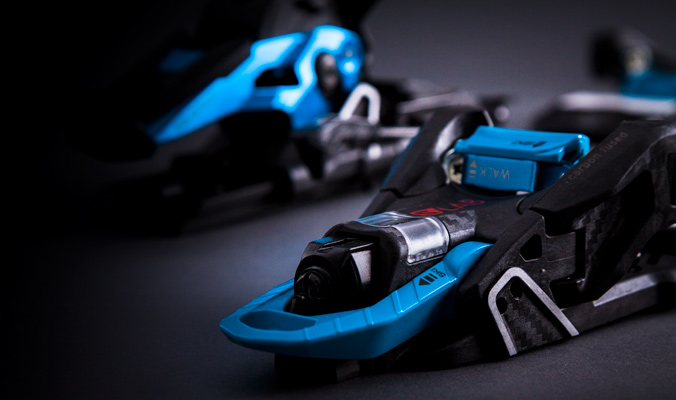
Before going deep into Salomon and Atomic’s new binding that aims to up the ante in AT binding safety, it’s important to consider a few basic truths far more fundamental than physics, rotational forces and international standards. For starters, opinions surrounding what constitutes “safe” are both subjective and relative—when it comes to tech bindings, especially, one person’s prioritization of saving weight may be another person’s death trap. Secondly, certifications assess a minimum level of reliability through a series of bench and field tests that may not correlate precisely to performance.
Here’s the granular stuff. Aside from Marker’s Kingpin, Fritschi’s Vipec Evo and Tecton and a few Dynafits, tech bindings do not meet any sort of international safety standard for reliable release, so their release values don’t correlate to those of alpine bindings; the certification that tech bindings strive for (DIN ISO 13992) is different—less stringent, some argue—from that of traditional alpine bindings (DIN ISO 9462). And, there’s no set standard for boot tech fittings specific to their shape, depth or distance from one another, meaning certain boot/tech-binding combinations may match less seamlessly than others.
For skiers who understand all of this and wish to weigh the pros and cons of saving weight while losing safety features, there is a panacea of tech bindings to consider. For those lost in the nuance or seeking uphill efficiency that’s equal to downhill reliability, there’s Salomon’s S/Lab Shift MNC and Atomic’s Shift MNC—the same binding, hereafter referred to as the Shift, with different branding for the two sister companies.
Quite simply, the Shift is an alpine binding that becomes a tech binding for the ascent. More specifically, the Shift meets the DIN ISO standards for both tech and alpine—it’s a best-of-both-worlds binding that some skiers may lament because of its lack of specialization while others will offer praise due to its quiver-of-one status.
The Shift’s heel is relatively straightforward: The unit is built with aluminum and carbon-infused polyamide—a durable, high-strength synthetic polymer—and is inspired by Salomon’s robust STH alpine heel. Simply flipping backward a winged lever locks the brakes up, lifting the boot’s heel free of the binding for touring mobility. That ramp is a two-degree angle, and another lever offers a 10-degree rise—the Shift has no flat mode.
The toe unit—similarly combining aluminum and polyamide—is the Shift’s Megatron. In ski mode, it appears and functions exactly like an alpine toe, with lateral elasticity to absorb prerelease-causing chatter and an AFD that’s compatible with all boot-sole types, except those with shortened or nonexistent toe rands like Dynafit’s Beast or Atomic’s Backland options. Because of this, the Shift could be skied all the time inbounds with a DIN-soled plug boot. Or not: lowering the blue, mid-toe lever spreads the toe’s jaws, revealing two pin-equipped wings that enable tech-touring efficiency. Entering these jaws is a somewhat tricky maneuver, however, that requires depressing the foremost blue lever to spread the wings and grab the boot’s toe fittings.
At our Powder Mountain Gear Test Week in March, tester feedback elevated the Shift to Editors’ Choice status. “Best ski-to-snow feel of the test—what a powerhouse,” one tester said. “This thing absolutely rails inbounds with power to spare,” another noted. “The power transfer to the ski is unmatched,” a third wrote. Nearly everyone who skied the Shift mentioned its weight—a half-pound heavier per pair than Marker’s Kingpin, previously the weightiest tech binding available, yet lighter than all frame-style AT bindings—and many considered the transition from ski to tour mode and back, at least initially, rather involved.
It’s not entirely fair to compare the Shift too closely to tech bindings, as it falls into a category unto itself. But words like “trustworthy” and “confidence inspiring” graced several reviews. And while safety may be in the eye of the beholder, those are words that everyone can understand.











I like these bindings with a lower DIN. I need 5-6 and I’d prefer not to be at the lowest end. Any chance of a change next year?
This binding will remain the same next year, though we’ve heard the price will increase by $50.
A Shift 10 is now being offered for that reason
Atomic shows it’s lowest DIN as 5 vs Salomon’s 6, is that real or marketing?